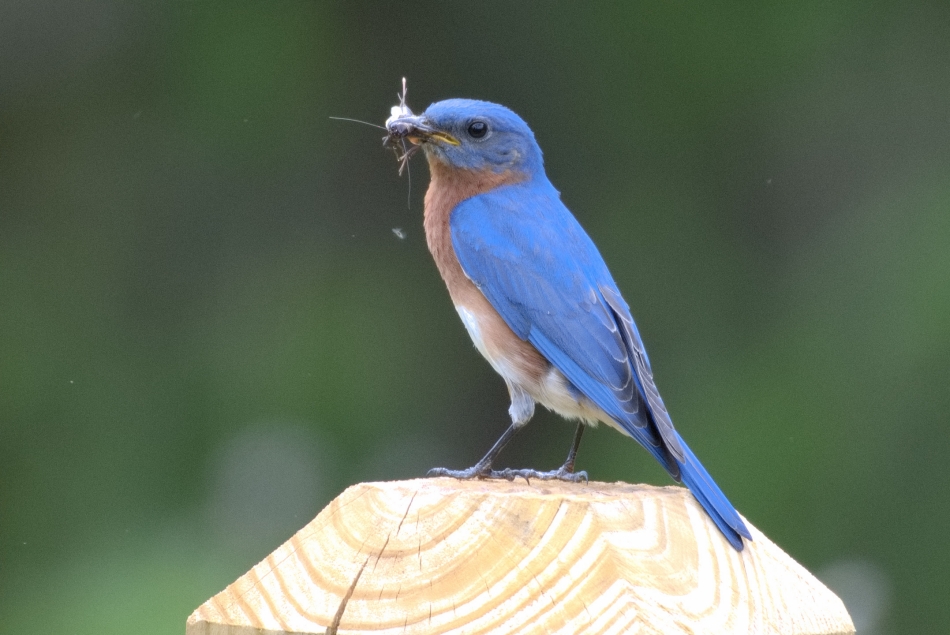North Field Trail

Bob Gore
Before you start on your walk, stop and listen. Can you spot a Bluebird?
Bluebirds Return to the Virginia Landscape
The bluebird has long been one of America's best loved birds, holding a special place in American song and poetry. However, by the mid twentieth century eastern bluebird numbers had declined seriously enough to reach critical status.
Many factors contributed to the decline of the bluebird. As cavity nesters, bluebirds prefer old woodpecker holes, holes in rotting wooden fences, or dead trees for nest sites. The use of metal fence stakes and clearing of dead trees caused a decline in suitable nest sites. In addition, the far more aggressive house sparrow and starling, imported to this country from England in the 19th century, have taken over most of the natural cavities bluebirds need. Additional factors such as the loss of their preferred habitat of open areas with scattered trees, an increase in pesticide use, and several severe winters along the Gulf Coast contributed to a decline in the bluebird population of nearly 90% by mid-century.
However, bluebirds are again a common sight at Ivy Creek and elsewhere thanks to the tireless efforts of volunteers who have built, erected, and maintain hundreds of bluebird nest boxes.
In 1986 local birder Ron Kingston erected 12 bluebird nest boxes at the Ivy Creek Natural Area. Since that time Ron has added several more boxes and still maintains them today. In that time more than 500 bluebirds have fledged at Ivy Creek. Watch for Ron's bluebirds as you walk the Field Trail where there are several nest boxes along the way.